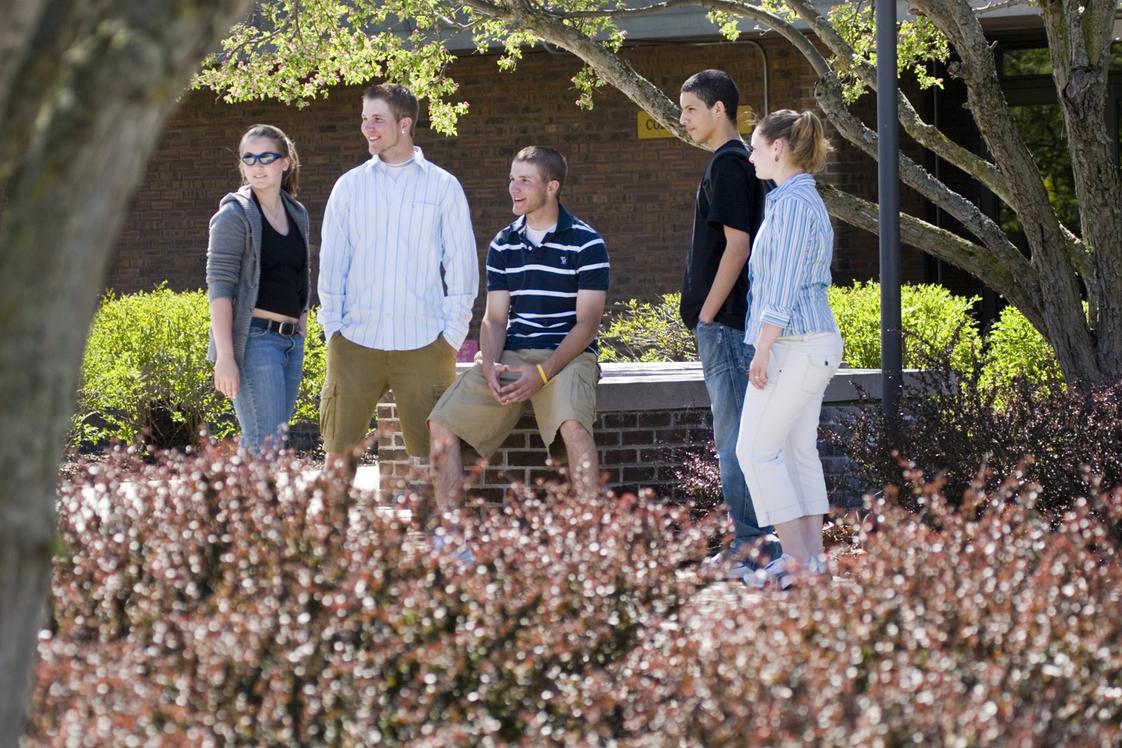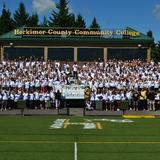- The mission of Fulton-Montgomery Community College is to be responsive to the changing needs of our society by providing quality accessible transfer and career opportunities, by building relationships with community partners, by disseminating new technologies, by supporting economic development and by fostering cultural and intellectual enrichment.
School Highlights
Fulton-Montgomery Community College serves 2,058 students (37% of students are full-time).
The college's student-teacher ratio of 12:1 is lower than the state community college average of 13:1.
Minority enrollment is 39% of the student body (majority Hispanic), which is less than the state average of 62%.
Quick Facts (2025-26)
- Enrollment: 2,058 students
- In-state tuition: $4,168
- Out-state tuition: $7,816
- Student-teacher ratio: 12:1
- Minority enrollment: 39%
- Source: Verified school update
Top Rankings
Fulton-Montgomery Community College ranks among the top 20% of public schools in New York for:
Category
Attribute
Affordability
School Overview
The teacher population of 176 teachers has stayed relatively flat over five years.
Fulton-Montgomery Community College
(NY) Community College Avg.
Carnegie Classification
Associate's Colleges: High Transfer-High Traditional
Baccalaureate/Associate's Colleges: Mixed Baccalaureate/Associate's
Institution Level
At least 2 but less than 4 years
At least 2 but less than 4 years
Institution Control
Public
Private not-for-profit
Total Faculty
176 staff
159 staff
Student Body
The student population of Fulton-Montgomery Community College has declined by 14% over five years.
The student-teacher ratio of 12:1 has increased from 11:1 over five years.
The Fulton-Montgomery Community College diversity score of 0.60 is less than the state average of 0.76. The school's diversity has stayed relatively flat over five years.
Total Enrollment
2,058 students
1,129 students
Student-Teacher Ratio
12:1
13:1
# Full-Time Students
757 students
528 students
# Part-Time Students
1,301 students
601 students
# Enrollment Undergraduate
205 students
357 students
# Full-Time Undergraduate Students
757 students
519 students
# Full-Time Graduate Students
n/a
44 students
# Part-Time Undergraduate Students
1,301 students
850 students
# Part-Time Graduate Students
n/a
41 students
Total Dormitory Capacity
288 students
382 students
% American Indian/Alaskan
n/a
n/a
% Asian
2%
8%
% Hispanic
11%
23%
% Black
3%
18%
% White
61%
38%
% Hawaiian
3%
2%
% Two or more races
4%
3%
% Non Resident races
4%
3%
% Unknown races
12%
5%
Diversity Score
0.60
0.76
College Completion Rate (Students who graduate in less than 4 years)
31%
33%
College Completion Rate (Students who graduate in 4 years or more than 4 years)
n/a
40%
Average Graduate Earnings (10 Years)
$33,400
$35,200
Tuition and Acceptance Rate
The public in-state tuition of $4,168 is less than the state average of $5,902. The in-state tuition has declined by 27% over four years.
The public out-state tuition of $7,816 is less than the state average of $10,404. The out-state tuition has grown by 36% over four years.
In-State Tuition Fees
$4,168
$5,902
Out-State Tuition Fees
$7,816
$10,404
% Students Receiving Some Financial Aid
82%
88%
Median Debt for Graduates
$12,000
$13,841
Median Debt for Dropouts
$5,500
$5,500
Acceptance Rate
n/a
74%
SAT Reading
n/a
475
SAT Math
n/a
505
SAT Writing
n/a
485
ACT Composite
n/a
20
ACT English
n/a
18
ACT Math
n/a
20
Source: 2024 (or latest year available) Integrated Postsecondary Education Data System (IPEDS)
School Notes
- Fulton-Montgomery Community College is located on 195 acres in the foothills of the beautiful Adirondack Mountains between Albany and Utica, NY. FMCC is dedicated to providing students with a quality education in an environment that nurtures success. With over 45 degree and certificate programs, the college offers small classes, individualized attention, and many diverse programs. Centered around a picturesque campus quad, campus facilities include a Student Union Building, The Evans Library, Communications and Media Arts Building, a Physical Education Building, which houses a state-of-the art Wellness Center, a Classroom Building and an Administration Building. The addition of the NASA-funded Spatial Information Technology Center allows students to study in the disciplines of geographic information systems (GIS), global positioning systems (GPS), remote sensing, and cartography. As a College of the State University of New York, Fulton-Montgomery Community College offers students an excellent two-year education at a very affordable price. The college offers many different academic certificate and degree programs. Fulton-Montgomery Community College is accredited by the Middle States Association of Colleges and Schools. All of its programs are registered with the New York State Department of Education and are approved for the training of veterans under the various public laws.
Frequently Asked Questions
How much does Fulton-Montgomery Community College cost?
Fulton-Montgomery Community College's tuition is approximately $4,168 for In-State students and $7,816 for Out-State students.
What is Fulton-Montgomery Community College's ranking?
Fulton-Montgomery Community College ranks among the top 20% of community college in New York for: Least expensive tuition.
Recent Articles

How to Transfer from Community College to a Four-Year University in 2025
A step-by-step guide for community college students transferring to a four-year university in 2025 — updated strategies, data and expert insights.

Scholarships for Community College Students 2025
Explore updated scholarship programs, tuition data, and expert strategies for community college students in 2025.

The Rise of Technical and Vocational Training in 2025
Explore the 2025 surge in technical and vocational training—enrollment, policy, costs, and why this path is gaining ground for students and parents.



















